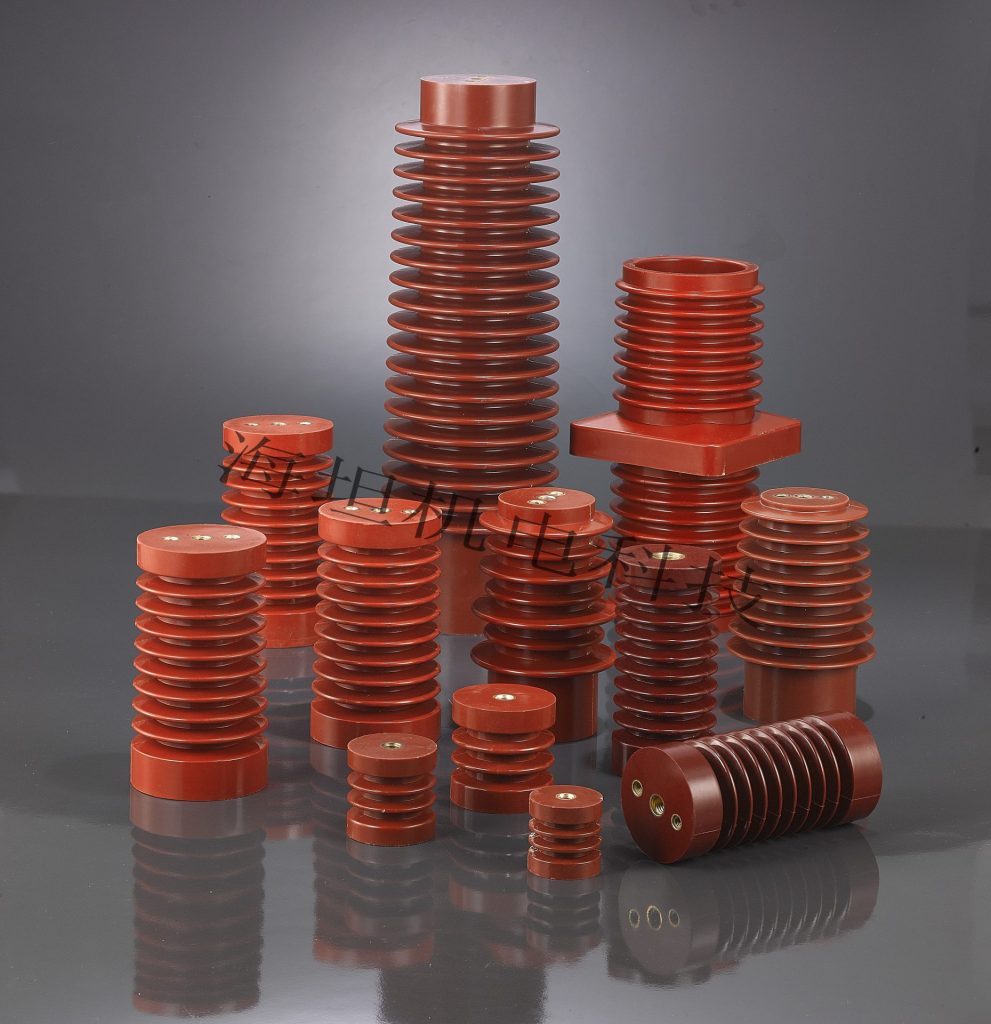Мацаванне шын нізкавольтнай размеркавальнай шафы: кіраўніцтва па выбары і ўжыванні ізалятараў DMC
Блог | Рэдакцыя | Верас 29,2025
Introduction
In modern electrical systems, low-voltage distribution cabinets play a vital role in safely delivering electricity to homes, commercial buildings, and industrial facilities. One of the most critical aspects of these cabinets is the busbar fixing system, which ensures stable and reliable connections. Proper selection of DMC insulators and SM insulators not only enhances safety but also extends the service life of the distribution system. This guide explains the advantages, selection criteria, and applications of DMC insulators for busbar fixing in low-voltage distribution cabinets.
What Are DMC and SM Insulators?
DMC Insulator Definition and Features
DMC (Dough Molding Compound) insulators are high-performance electrical insulators used for low-voltage busbar support. They are made from composite materials that provide:
High mechanical strength to withstand vibration and mechanical stress.
Excellent electrical insulation to prevent leakage and short circuits.
Thermal resistance for operation under high-temperature conditions.
SM Insulator Overview
SM insulators are another type of support insulator used in distribution cabinets. They provide:
Reliable busbar fixation.
Good mechanical and electrical performance for general applications.
DMC vs SM Insulator
While both DMC and SM insulators are suitable for busbar fixing, DMC insulators offer several advantages:
Lighter weight and higher strength-to-weight ratio.
Better resistance to environmental factors like moisture and pollution.
Longer service life in high-reliability installations.
Importance of Busbar Fixing in Low-Voltage Distribution Cabinets
Role of Busbar in Power Distribution
Busbars act as the main current-carrying components in low-voltage distribution cabinets. Secure busbar fixing ensures mechanical stability and prevents unwanted movement that could compromise electrical safety.
Risks of Improper Busbar Fixing
Improper installation or the use of low-quality insulators can result in:
Overheating and short circuits.
Mechanical vibration leading to loose connections.
Increased maintenance costs and reduced equipment lifespan.
Advantages of DMC Insulators for Busbar Fixing
High Mechanical Strength
DMC insulators withstand mechanical stress and vibration, ensuring stable busbar support even in heavy-duty applications.
Electrical Insulation Performance
With excellent dielectric properties, DMC insulators prevent electrical leakage and improve the overall safety of low-voltage switchgear.
Thermal and Environmental Resistance
DMC insulators resist high temperatures, humidity, and pollution, making them ideal for harsh industrial or coastal environments.
Cost-effectiveness and Durability
Due to their long service life and low maintenance requirements, DMC insulators offer a cost-effective solution for distribution cabinets.
Selection Guide for DMC Insulators in Distribution Cabinets
Key Parameters to Consider
Voltage rating of the system.
Mechanical strength to support busbar weight.
Environmental conditions such as temperature, humidity, and pollution.
Compatibility with Busbar Designs
Choose DMC insulators that fit the specific layout and spacing of your distribution cabinet’s busbars.
Standards and Certifications
Ensure that selected insulators comply with relevant standards such as IEC to guarantee safety and reliability.
Applications of DMC and SM Insulators in Power Systems
Residential Power Distribution
DMC and SM insulators are commonly used in household distribution boards to secure busbars and ensure stable current flow.
Commercial and Industrial Switchgear
In offices, factories, and industrial low-voltage cabinets, DMC insulators provide high reliability for critical electrical circuits.
Specialized Applications
High-reliability environments, including data centers and hospitals, benefit from DMC insulators’ durability and superior insulation performance.
Installation and Maintenance Tips
Proper Installation of DMC Insulators
Align insulators correctly to avoid mechanical stress.
Use appropriate torque settings for fastening busbars.
Ensure proper spacing for electrical insulation.
Regular Inspection and Maintenance
Periodically check for cracks, wear, or loosening.
Inspect for signs of electrical tracking or discoloration.
Replace damaged insulators promptly to maintain system safety.
Long-Term Reliability of DMC Insulators
Modern DMC insulators are designed for long-term stability, even under heavy load conditions. By combining high mechanical strength and excellent electrical insulation, they ensure safe and reliable busbar fixing for years. As smart distribution systems become more common, DMC insulators are expected to play an increasingly important role in advanced low-voltage switchgear applications.
FAQ
Q1: What is a DMC insulator?
A DMC insulator is a composite insulator used to support and fix busbars in low-voltage distribution cabinets.
Q2: How does DMC differ from SM insulators?
DMC insulators are lighter, stronger, and more resistant to environmental conditions, making them more suitable for high-reliability applications.
Q3: How do I choose the right DMC insulator for my busbar?
Consider voltage rating, mechanical load, environmental conditions, and compliance with IEC standards.
Q4: Can DMC insulators be used in industrial environments?
Yes, they are ideal for industrial and commercial applications requiring long-term durability and reliable electrical insulation.
Conclusion
Selecting the right DMC insulators is crucial for safe, reliable, and long-lasting busbar fixing in low-voltage distribution cabinets. Compared to SM insulators, DMC insulators provide higher mechanical strength, better environmental resistance, and longer service life. By following proper selection, installation, and maintenance practices, electrical engineers can ensure optimal performance, safety, and cost-effectiveness in residential, commercial, and industrial power distribution systems.
--- КАНЕЦ ---
© Аўтарскае права China Haitan Electromechanical Technology Co., Ltd., 2024. Усе правы абаронены.ПАДТРЫМКА: JUNJ Палітыка прыватнасці



